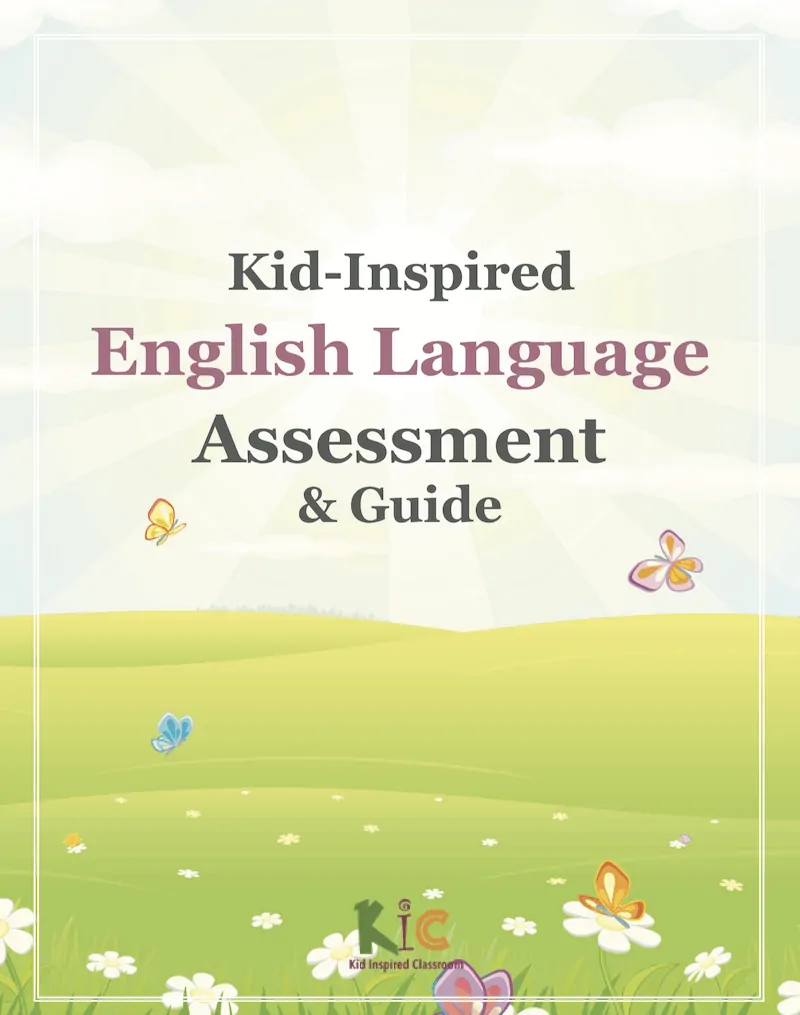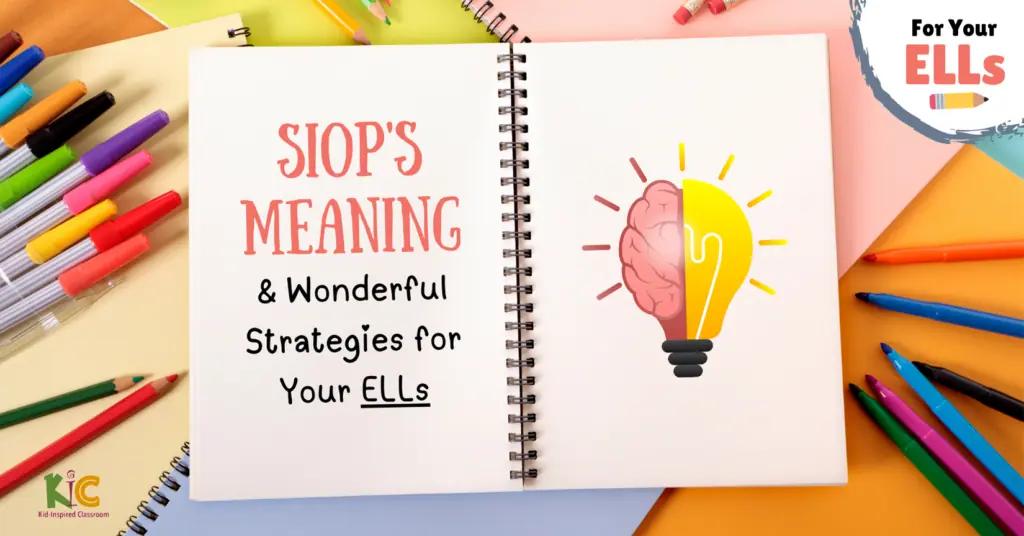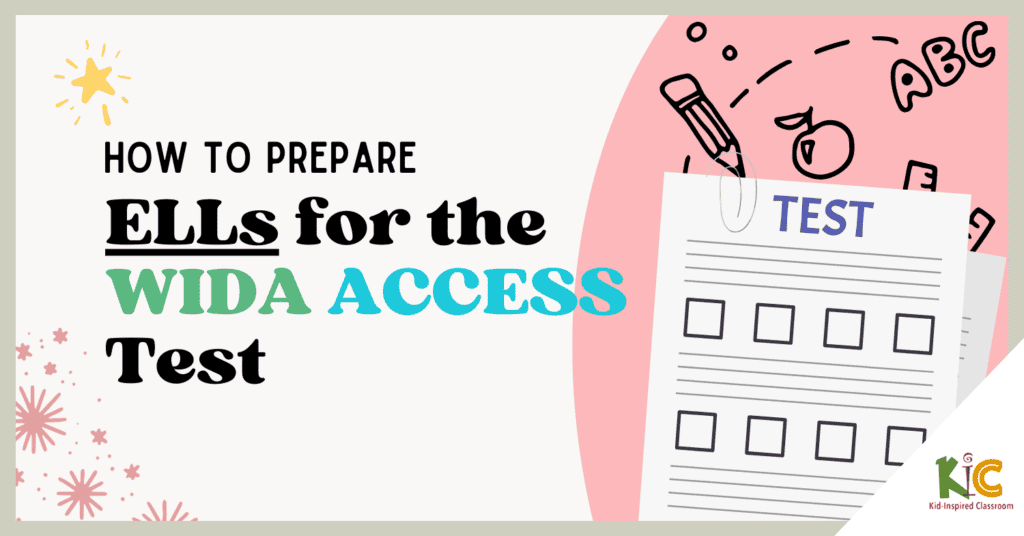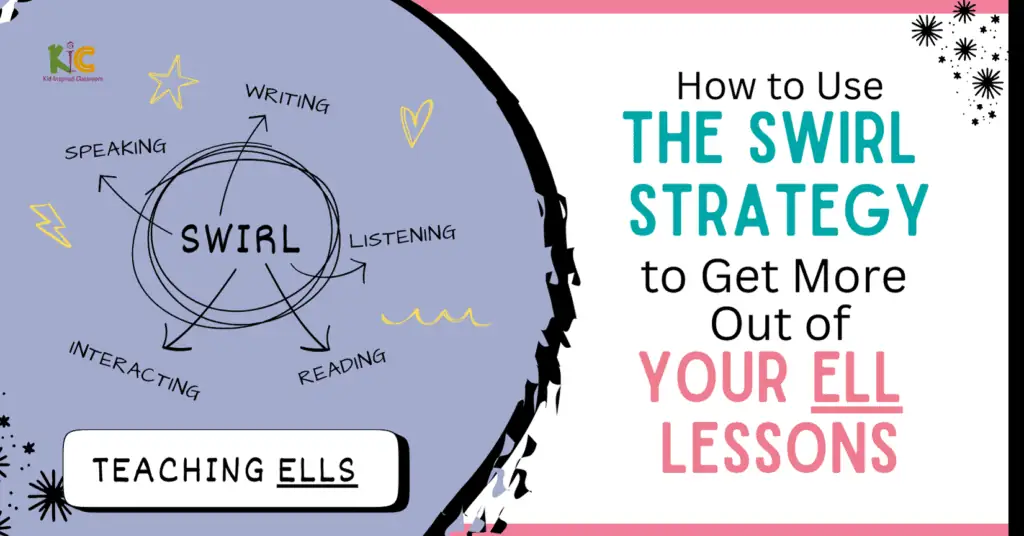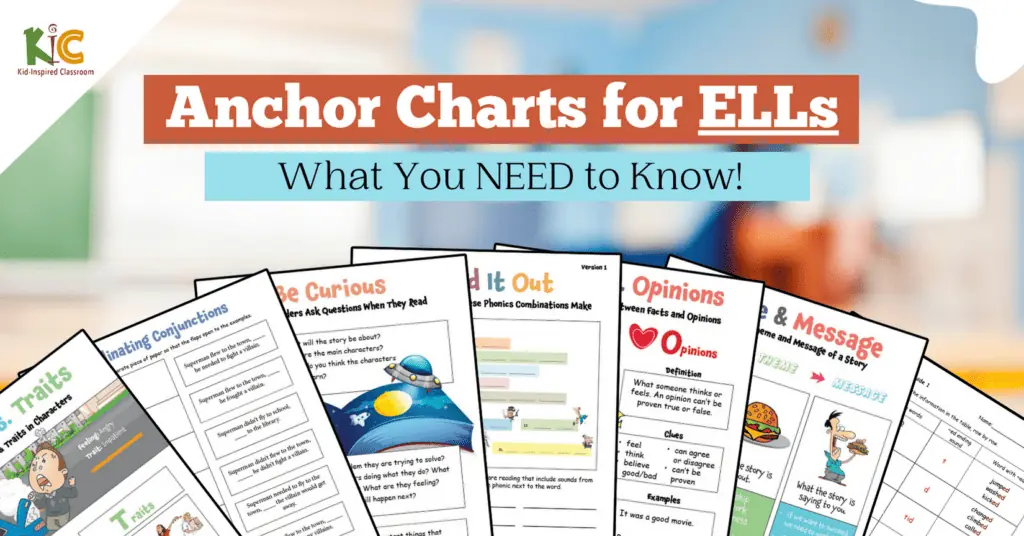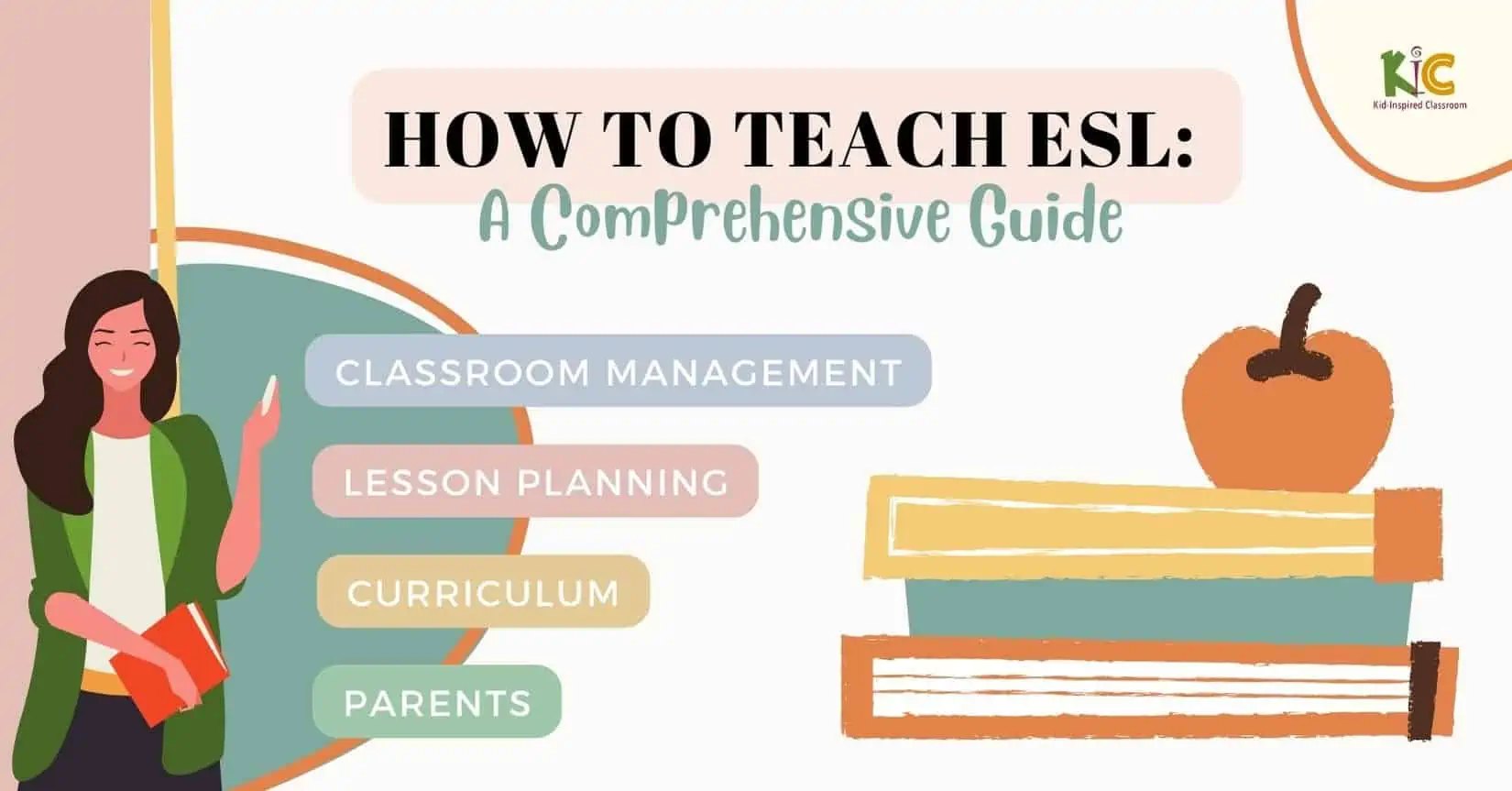
If you have questions about how to teach English as a second language (ESL), are looking for ESOL strategies and ideas, or need an ESL curriculum, you are in the right place.
Table of Contents
Click below to jump directly to a topic.
How to Teach ESL: Getting Started
When getting started with how to teach ESL, we have to be very careful not to confuse what our students should know with what they do know.
We may be painfully clear about what they should know and where they should be, but in order to get them there, we need:
- 1A Clear Picture of Where Students Are
- 2A Solid Plan to Get Them Where They Need to Go
A Clear Picture of Where Students Are
Learning a language is complicated and every student is different. A clear picture of how each student is doing will help us decide how to teach them going forward.
We need to find out where our students are in each of the 9 areas below to help us decide what they need to work on.
The 9 Main Areas in Getting a Clear Picture of an ESL Student's Level
- Vocabulary
- Speaking
- Listening
- Reading
- Writing
- Grammar
- Phonics
- Spelling
- Interest
A good assessment will give you specific data in each of these areas. If you don't have one, you can grab a free copy of the Kid-Inspired ESL Assessment and Guide by hitting the button below.
A Solid Plan to Get Them Where They Need to Go
Once you have a clear picture of where your students are, you will be able to start planning out how to get them where they need to go.
You will probably have some goals provided by your school or district, and you will probably have some of your own goals in mind. Either way, you may want to sit down with your students, discuss the goals together with them and get their feedback.
When students feel like they have a choice in their learning, they take more responsibility for it.
You can build community in the classroom by making the whole class responsible for helping each student achieve the goals. Everyone works together. Everyone helps each other. No one gets left behind.
Write the goals as "I can" statements.
I have provided a few examples below.
By the end of the semester...
Now that we have talked about where our students are and where they need to go, we need to figure out the steps to get them there.
That is where lesson planning comes in, the second part in this guide on how to teach ESL.
How to Teach ESL: Fast, Effective ESL/ELL Lesson Plans for Your Classes
When we discuss how to teach English as a second language, there are a million ways to have a great class and just as many ways to have a bad one.
There are a million ways to have a great class and just as many ways to have a bad one.
Good lesson plans will help you have more of the first and fewer of the second. Each lesson plan should help students take another step towards the goals you have set.
I suppose it may be obvious, but it is worth stating that our primary goal is for students to learn as much as possible in the time we have with them.
- It is not enough to simply have smooth, problem-free classes.
- It is not enough that the students are simply happy.
- It is not enough that we just get through all of the material.
Each and every ESL student needs to make consistent, substantial steps towards their goals each class. We don't have a lot of time with them and we need to make each class count.
How can we make sure that students learn as much as possible in the time we have with them?
Here are a few guidelines for writing really effective lesson plans.
You can find lots of game and activity ideas organized by language domain by clicking below.
If you need more help with lesson planning, click the button below to grab a free guide to writing great lesson plans for your ELs.
Once you have a good lesson plan, the next task is to put it into action in the classroom when you are teaching your ELs. That is where classroom management comes in.
Let's take a look at classroom management next, the third part in this guide on how to teach ESL.
How to Teach ESL: Classroom Management
Having the best lesson plan in the world will do you no good if you are struggling to manage your classes.
There are two sides to classroom management, both equally important.
Classroom Organization
I have had the privilege of training some great teachers (as well as a few who weren’t so great) on how to teach ESL, and most every new teacher has said housekeeping was the most difficult challenge when they first began. Housekeeping stuff trumped even behavioral problems when it came to stressing out new teachers, but, of course, the behavioral problems were exacerbated by the poor housekeeping.
Getting your housekeeping organized is your first priority. You need to have good organization and good routines for your classes.
- Good organization includes things like: where school supplies go, how the desks are arranged, who sits next to who, where homework is turned in, how homework is organized and graded.
- Good routines include things like: how to line up (for younger students), how to ask for something politely, how to solve conflicts (Rock, Paper, Scissors), how to correct homework assignments, how to practice so that you remember.
Classroom Discipline
Once you have good structures, routines and organization planned out for your classes, then you can start thinking about how to follow through.
I like the word discipline for the process of following through with students because that is what we are hoping to instill: discipline.
Students need to learn that everything worth doing requires hard work and hard work takes discipline.
Students need to learn that everything worth doing requires hard work and hard work takes discipline.
Don't think of consequences as punishment. Think of consequences as the natural outcome of choices students make.
This also means that we have to take the emotion out of following through with our students.
If you get angry, you have lost.
If you get angry, you have lost.
We have all gotten angry and will get angry again. If you find yourself getting angry in the classroom, there is no judgment here.
Yet, if you find yourself getting angry, pay attention. There is likely something earlier in the class that you didn't deal with that you should have.
Decide on the most important things to follow through on--you don't need to follow through on everything, you are not running a military. Then decide on how you will follow through.
If you don't have a consistent system for following through with your students, you need one. Whatever your system is, be sure to do the following three things before each activity.
3 Things to Do Before Any Activity
- Make Expectations Clear - Before any activity, be sure to tell your students clearly what it is you want to see them doing. Don't expect them to just know. Tell them.
- Make Rewards Clear - Before any activity, be sure to tell them why they are doing it. The reason can be that they learn something new, or get better at something that is difficult, but you may also need to reward them with points and/or games. Regardless, make the rewards clear.
- Make Consequences Clear - The consequences may be that if they don't finish, they will need to finish at break time or at home, or they may not get to participate in a game. Make this clear beforehand as well.
How to Teach ESL: The 4 Language Domains
When talking about language, most people refer to 4 language skills or domains: speaking, listening, reading and writing.
This is a great list as long as we remember the following:
I find myself telling teachers a lot that you get better at what you practice. It seems obvious, but it is easy to lose sight of when you are working with students in the classroom.
If students only fill in blanks on worksheets, they get good at filling in blanks on worksheets.
If students only fill in blanks on worksheets, they get good at filling in blanks on worksheets.
If we want them to improve in speaking, they have to speak; in listening, they have to listen. Reading requires reading and writing requires writing.
Learning to Walk
To learn, students have to practice a lot, but it isn't as simple as just telling them to speak, or putting a book down in front of them and asking them read.

Learning how to teach ESL is a little like learning how to teach a child to walk.
The process is a little like a child learning to walk. First, a child walks by holding on to chairs, couches, parents and counters. Eventually, they move away from those supports to walk on their own. They may still fall down sometimes, but the desire to walk independently is powerful.
It is the same for each language domain, only instead of parents and chairs, students have you and whatever materials you give them. Most English language teachers refer to these supports as scaffolds.
Let's take a look at a couple of examples.
Example 1: How to Teach Speaking
- 1When practicing speaking, start by giving the students scripted things to practice saying.
- 2When practicing speaking, students start by giving the students scripted things to practice saying.
- 3Then practice saying the same thing without the script.
- 4After students have grown more confident, they can leave the scripts and structures behind and walk on their own.
Materials Design
At this point, it is important to consider how we can design our materials to make this easier for you and your students. This is how I designed the speaking pages for Kid-Inspired Classroom materials. You can create something similar.

An example page from the Kid-Inspired ESL Paths to Fluency Membership
Example 2: How to Teach Reading
There are two main parts to reading: decoding and comprehension.
- 1Decoding requires phonics.
- 2Comprehension requires vocabulary and grammar.
Decoding involves matching sounds with letters and combinations of letters. This is phonics.
Without a good grasp of the basic sounds and combinations of sounds, students are left to guess. For phonics to be a helpful tool for our ESL students, we need to teach sounds systematically using carefully written word lists and texts and make sure that students have mastered one step before moving on to the next.
Finding a good phonics curriculum is important.
If you don't have a good phonics curriculum, in the Kid-Inspired ESL Curriculum Membership, there is an entire phonics curriculum written for English language learners.
Once students start gaining the confidence to sound out the words on a page, we can start focusing on comprehension.
Comprehension requires vocabulary and grammar. A student needs to know over 90% of the words on a page to be able to understand what the page is talking about. That means that if we want our students to understand a text from their science class, we need to get them speaking, listening and discussing a lot using the science vocabulary and grammar found in the text.
Learning how to teach ESL involves learning a lot of different skills. Most of the skills we have discussed already take place in the classroom. The next one does not. Our relationships with students' parents can drastically affect not only how a student does, but also your sanity as a teacher.
How to Teach ESL: Building Trust with Parents
Some parents are wonderful and helpful, others are not.
Most parents are good people who care about their kids more than just about anything else in the world. Unfortunately, even with the best of parents, they don't care nearly as much about you.
As teachers, we know how much time and effort we put into our students. Our parents do not.
They don't get to come in and watch our classes. They only get to hear what their children say after school and children do not usually relay information in a fair and unbiased way.
This situation can be similar to a barrel of TNT waiting for someone to light a match at the next parent-teacher conference.
This situation can be similar to a barrel of TNT waiting for someone to light a match at the next parent-teacher conference.
The best way to make your life easier, have a greater impact on your students, and endear yourself to the administration at your school is to build trust with your parents.
Tips for Building Trust with Parents
The more you do these things, the more your parents will trust you, the more you will be able to work together to help their children, and the fewer complaints you hear back from parents.
The administration at your school will also love you.
They don't want to argue with parents. They don't want to be stuck in the middle between stubborn parents and a teacher who has dug in his or her heals.
But most importantly, you can't beat the house. The more home support you have the more of a difference you can make in a child's life. If a parent is against you, there is little you can do.
How to Teach ESL: What Curriculum to Use
When discussing how to teach ESL, one of the number one issues ESL teachers share with me is that they don't have the materials they need.
There are a lot of options out there and choosing what is best for your students can be difficult. That is why you need to get a really clear picture of where your students are and what they need most, something we covered above in Choosing the Right Level.
Here are some popular free sites where you can find materials or tips for teaching your students:
These free resources are great but they lack an overall structure or consistency across content.
- You have to piece together your own curriculum with materials that are rather hit and miss.
- There is also no consistency of vocabulary between speaking practices, reading passages, worksheets and other materials.
- The vocabulary, grammar, reading and writing are not leveled consistently which means some things are way too easy while others are way too hard, sometimes on the same worksheet.
That is why I have made the Kid-Inspired ESL curriculum available online. It was developed over the course of a decade based on the results of 100s of students and feedback from dozens of teachers. My goal is to make it easy for ESL teachers to find what they need, print and teach.
The Kid-Inspired ESL Curriculum
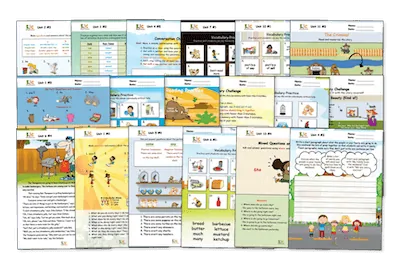
Example pages from the Kid-Inspired ESL Curriculum
You have enough on your plate making a difference in the lives of your students.
You can sign up for the Kid-Inspired ESL Curriculum Membership by clicking below.
Other helpful resources for how to teach ESL:
- 15 Tips for Working With English Language Learners
- Supporting ESL Students in the Mainstream Classroom - Great article from the Cult of Pedagogy on supporting English learners in the mainstream classroom.
- Jooble - Helpful ESL job listings site with filters to help you locate professional teaching positions both online and offline.
